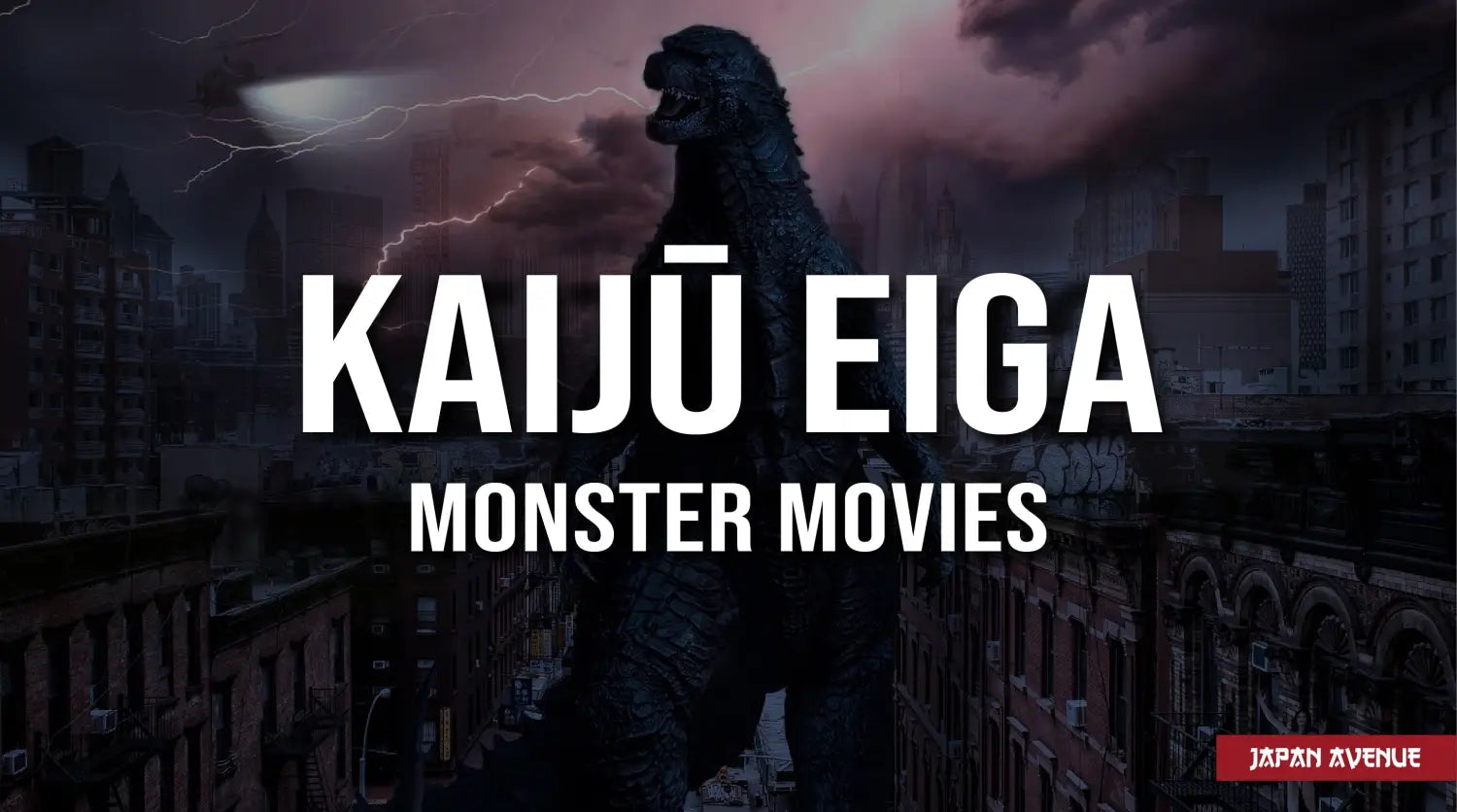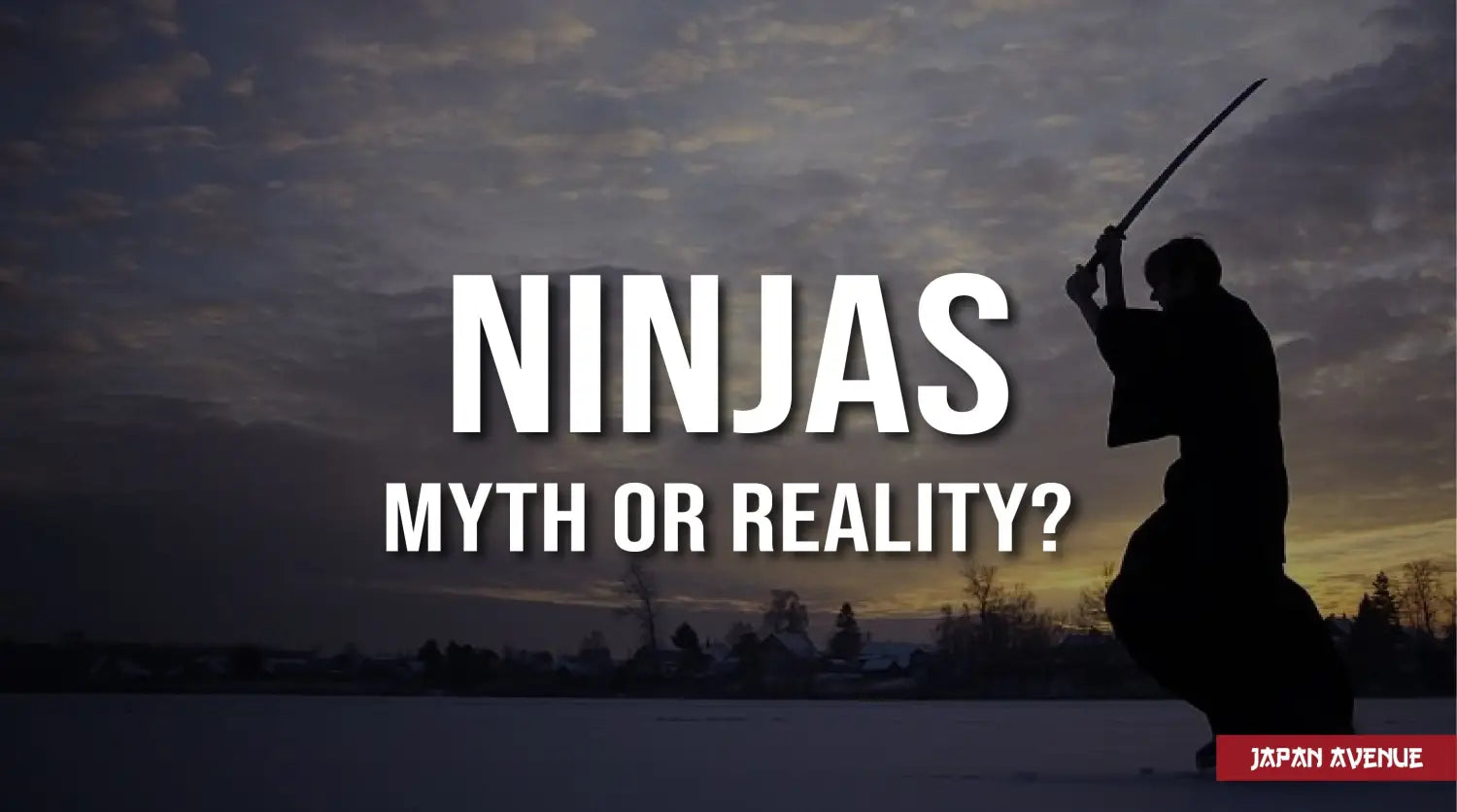Japanese cinema is internationally known for its samurai films, animated features, terrifying yūrei and popular science fiction monsters. Ranking among the most productive on the planet, it spans many genres from historical films to contemporary cinema, drama, yakuza stories, coming-of-age stories as well as erotica.
In this article, we are going to talk about a category that has influenced the pop culture of the country.
The Kaijū eiga is a genre of Japanese cinema that features gigantic creatures using actors dressed as latex monsters and cardboard models of cities. Its international star: Godzilla with no less than thirty films to his credit. Since the success of this saga, other kajū eiga have emerged.
Immerse yourself in the atmosphere of monster movies and discover the must-see films.
😱 Kaijū eiga, the monster cinema

The ground shaking, roaring, buildings collapsing ... under the destructive madness of a giant monster that sows chaos in the heart of a large city, with in the end a nice ecological message ... This is the typical scenario of the Kaijū eiga genre. Let's have a closer look at the origin of monster movies in Japan.
☝️ What does kaijū mean?
In Japanese, Kaijū 怪獣 refers to "strange beast" or "mysterious creature" and by extension to the large, unsympathetic creatures known as "monsters". The term eiga 映画 on the other hand, refers to the movie genre. In Japan, there are many categories of movies such as chanbara eiga (equivalent to our cloak and dagger movies), yakuza eiga, yūrei eiga or pinku eiga to define erotic movies. Therefore, we can translate "kaijū eiga" as "Japanese monster movies".
📌 A short story on the kaijū eiga genre
Monster movies first appeared in the United States with "King Kong" in 1933, where a young woman is caught in the clutches of a huge gorilla that destroys New York City. Two decades later, "The Lost Time Monster" tells the story of the awakening of a terrible creature following a nuclear test. During this post-war period, Japan was slowly recovering from the trauma of Hiroshima and Nagasaki. It was then that Godzilla, initially named Gojira, appeared in Japan in 1954.
Building on its success, the SF film launched a new genre in the Land of the Rising Sun: monster cinema or kaijū eiga in Japanese. Inspired by the damage of nuclear power, kaijū eiga films often show scenes of mass destruction as a message of awareness. Godzilla is such an opus that it will be declined in many parts.
🦖 Godzilla, the king of Japanese monsters

Everyone has probably heard his name: Godzilla, the mythical monster of Japanese cinema was imagined by the Japanese producer Tomoyuki Tanaka. Seeing the success of King Kong, he had the idea of riding the wave of giant monsters. Its real name is Gojira (a mixture of gorilla "gorira" and whale "kujira" in Japanese) but the prehistoric lizard looks more like a mixture of dinosaur and alligator. It can be recognized by its gigantic size, its rough scales, its dorsal spines, its powerful tail and its sharp jaw. Directed by Ishiro Honda, the master of the genre and produced by Studio Tōhō, the film was a real hit and has appealed to numerous fans since the 1950s.
🦍 The list of the most famous kaijū
After King Kong, the rampaging gorilla and Gozilla, the legendary giant lizard, other kaijū marked the history of science fiction:
Anguirus (1955) :
Ankylosaur-like dinosaur and the first monster to challenge Godzilla.
Rodan (1956) :
Giant prehistoric reptile, flying at the speed of a hypersonic aircraft.
Mothra (1961) :
Gigantic butterfly protector of nature, escorted by two tiny fairies.
Gamera (1965) :
Giant turtle imagined by the Daiei Film studio to rival Godzilla.
Baran (1958) :
A prehistoric creature that looks like a large lizard with back spines.
Ghidorah (1964) :
Three-headed golden dragon, Godzilla's archenemy, nicknamed King Ghidorah.
🤩 Here are some must-see kaijū movies

Among the kaijū movies, some are particularly cult-like because of their creativity or the special effects used at the time. From 1930 to today, here is the list of monster movies, not to be missed.
🔶 King Kong by Merian C. Cooper and Ernest B. Schoedsack (1933)
& Remake by Peter Jackson (2005)
Darow, a pretty blonde, is the star. On this island, inhabited by prehistoric animals, there is also a strange creature that is venerated by the natives. As soon as she arrives Ann is kidnapped and offered to the god Kong.
🔶 Godzilla by Ishiro Honda (1954)
& Godzilla Resurgence by Hideaki Anno and Shinji Higuchi (2016)
A fishing boat is found abandoned in Tokyo Bay. After investigation, it appears to be the work of a giant creature that is capable of destroying humanity. A while later, the monster finds itself in the middle of Tokyo city and destroys everything in its path, causing many victims...
🔶 Rodan by Ishiro Honda (1956)
In southern Japan, in a small village on the island of Kyushu, miners are victims of strange attacks. A deeply shocked survivor tells of seeing the hatching of a gigantic egg.
🔶 Mothra by Ishiro Honda (1961)
Some men go to a mysterious island heavily irradiated and discover an indigenous population and two tiny fairies. The latter are abducted, provoking the anger of the island's deity: Mothra. The larva will turn into a huge butterfly that destroys everything on its way.
🔶 Atragon by Ishiro Honda (1963)
Mu, an ancient civilization sunken in the ocean, is about to resurface and conquer the world. Faced with this planetary threat, Earth retaliates and sends a fearsome flying war submarine to confront the dragon of Mu.
🔶 Ghidorah the Three-Headed Monster, by Honda Ishiro (1964)
A meteorite hits the Earth. Soon after, a Martian woman from the future makes mysterious predictions. Humanity would have been destroyed by a titanic monster. Godzilla, Mothra and Rodan will then have to join forces to face the terrible three-headed creature named Ghidrah.
🔶 Gamera by Noriaki Yuasa (1965)
At the North Pole, a terrible atomic explosion awakens a prehistoric creature that has been trapped under the ice for 8000 years. Attracted by the warmth of the city, the hungry monster heads for Tokyo spreading chaos.
🔶 Daimajin by Kimiyoshi Yasuda (1966)
In medieval Japan, a population oppressed by the power and violence of a ruthless lord, prays to a huge stone statue. The warrior deity resurrects to help the villagers.
🔶 The host by Bong Joon Ho (2006)
Park hee-bong lives peacefully with his family in Seoul and runs a snack bar near the Han River. The water there is particularly polluted. One day, an aquatic monster emerges from the depths of the Han River spreading terror and kidnaps Hyun-seo, his granddaughter.
🔶 Cloverfield by Matt Reeves (2008)
In New York, Rob is thrown a surprise party by his relatives before he leaves for Japan. His friend Hub is assigned to film the party. Everything is going smoothly until the guests feel a violent tremor: a kaijū is shaking Manhattan.
🔶 Pacific Rim by Guillermo del Toro (2013)
Humanity is attacked by giant creatures that devastate the planet. Even the military forces are unable to combat them. A former pilot and a woman are called in as a last hope. Aboard a huge robot, they will try to save the world.

Ultraman. Source: web-japan.org
Since the 1950s, kaijū eiga have marked Japanese pop culture. With its cult fictional monsters, special effects and ever more impressive stunts, the genre still excites its fans today. How about you, what is your favorite kaijū?



